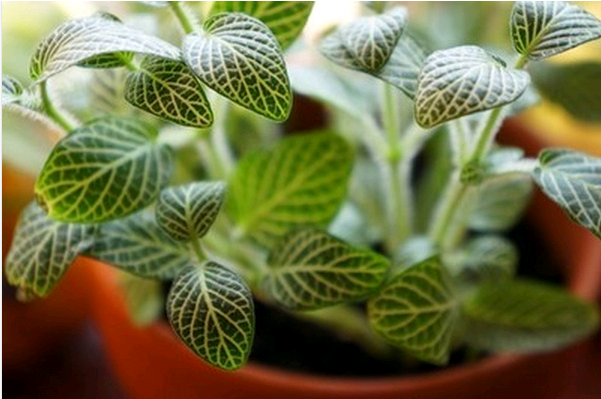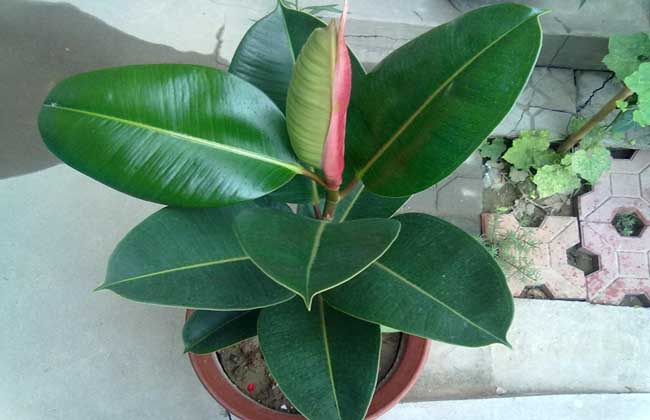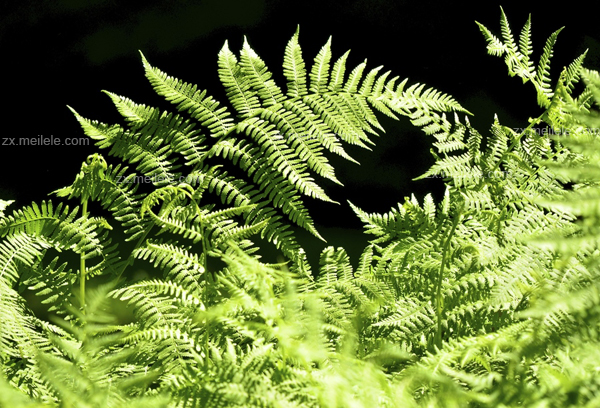How to raise reticulate grass? the breeding method of reticulated grass.
How to raise reticulated grass? reticulated grasslands are produced in tropical African jungles. They like cool, hot and humid environments, and grow luxuriantly in high temperature, high humidity and dark environment. South China can be cultivated all the year round in shady greenhouses or air-conditioned rooms. The cultivation temperature of Rhizoctonia lanceolata should generally be above 18 ℃, below which the leaves will fall off.
The optimum temperature for its growth is 20-30 ℃. The grass grows well in scattered sunlight, when the light is too strong, the plant grows slowly and short, the leaves curl up and lose the original color, affecting its ornamental value. When the room temperature is lower than 18 ℃ and not less than 12 ℃, the leaves of the plant will fall off, but the stem will not freeze to death; in the second year, new leaves will grow when the room temperature exceeds 18 ℃, and the leafless stem can also be used for cutting propagation; in the environment below 8 ℃, the plant will freeze to death.
Reticulate grass needs higher air humidity in the growing season, especially in summer, more attention should be paid to watering to keep moist, but the leaves should not be watered. Too much water retention for too long will cause leaf rot and shedding, or cause stem rot and plant death. Therefore, reticulate grass pot watering generally put the flowerpot into the water for a short time to soak it to fully absorb water and reduce the number of watering, generally 2-3 days after the pot soil can remain moist. Or pad a small shallow plate at the bottom of the flowerpot, watering can not only prevent soil and water outflow from soiling the environment, but also maintain high air humidity to make the plant grow luxuriantly.
The cultivation substrates of Rhizoma reticulata are loose, permeable and fertile. When the substrate is poor in water permeability and excessive water accumulation, it will cause rotting roots, resulting in poor plant growth and even death. The cultivation substrate of reticulate grass is generally made of 1 part of garden soil, 1 part of peat soil, river sandy soil and a small amount of base fertilizer, and can also be cultivated with the mixture of coconut shell and perlite. Root fertilizer and foliar fertilizer should be applied frequently in soilless culture. the fertilizer used is generally compound fertilizer. Fertilization is usually applied once a week during the growing season. When fertilizing, special attention should be paid not to stick too much foliar fertilizer on the foliar surface, otherwise it will cause foliar rot and affect its growth and ornamental value.
In addition, in order to ensure the beautiful shape of the plant, the newly planted potted seedlings should pick the heart many times to make the branches of the plant luxuriant, and the stem of the lower part of the plant with defoliated or rotten leaves should be trimmed to make the plant beautiful and reduce diseases and insect pests. the above is an introduction to how to raise reticulate grass.
How to raise reticulate grass, breeding methods and matters needing attention

The breeding method of reticulate grass, reticulated grass is a very popular potted variety in Europe and America at present. It has a light posture and a small plant, and is deeply loved by people. So how to breed the grass?
Culture methods of reticulate grass 1. Light and temperature
Reticulate grass prefers semi-shady growth environment to direct sunlight. In summer, it is necessary to shade the reticulate grass to cover most of the sun. In winter, you can move the reticulate grass to a place where you can come into contact with the sun for maintenance.
The suitable temperature for the growth of reticulate grass is between 18 ℃ and 24 ℃, and it is not hardy. The best temperature for overwintering in winter is above 10 ℃, not lower than 8 ℃.
2. Soil selection
When planting reticulate grass, you can choose soil rich in humus, which requires strong air permeability and water retention capacity, and peat soil can also be used.
3. Watering and fertilizing
Watering reticulate grass needs to master certain skills, because the root system of reticulated grass is relatively shallow, so whether there is more water or less water, the influence is not good. Basically to keep the basin soil slightly moist, not too dry or too wet, too dry will make the leaves lack of water, too wet will make the roots of grass rot.
Reticulate grass has a high need for fertilizer, but fertilization should follow the rule of applying fertilizer thinly. In the period of vigorous growth of reticulate grass, you can apply fertilizer to it every half a month. In order to make the leaves green, you can spray some manganese sulfate solution to the leaves.
Matters needing attention in the culture of reticulate grass 1. Diseases and insect pests
Patellar diseases and insect pests often occur in the growth process of reticulate grass, but there are also diseases such as leaf rot and root rot, as well as shell insects, snails and red spiders.
2. Diseases of reticulate grass
Leaf rot was controlled by spraying 1000 times of carbendazim wettable powder. Root rot disease was sterilized by soaking the root with 1000 times solution of streptomycin.
3. Pick the heart of the reticulate grass
In the growing period of reticulate grass, in order to promote its multi-branching and control the height of the plant, it is necessary to pick the heart frequently, which is conducive to the vigorous growth of reticulated grass.
4. Spread fertilizer
When fertilizing, reticulate grass also follows the fertilization principle of "light fertilizer applied frequently, less and more times, and complete nutrition", topdressing compound fertilizer once a month.
5. Watering key points
The watering time of reticulate grass should be arranged when the temperature is low in the morning as far as possible. Summer is watered in the morning or evening when the temperature is low, and plants are often sprayed. Winter: the watering time during the winter dormancy period is arranged as far as possible when the temperature is high at noon on a sunny day.
How to raise reticulate grass, breeding methods and matters needing attention / skills of exploding basin
Because the efficacy and function of reticulate grass are many, in addition, its breeding method is relatively simple, so more and more people grow it. This small and exquisite plant is generally planted in a pot or hanging way, so how to raise it? How to raise the explosive pot of reticulate grass? The editor has sorted out the breeding methods and matters needing attention of reticulate grass for your reference.
The growing environment of reticulate grass
Industrial tropical South America reticulate grass, like high temperature, wet semi-shade environment, it is more sensitive to temperature, can not bear low temperature. Like sandy acid soil in the soil, higher requirements in moisture, to keep the soil moist, in the light, it is more afraid of strong light, so summer should be appropriate shading.
Culture methods and matters needing attention of reticulate grass
1. What pots are used for reticulate grass
The flowerpots used for planting reticulated grass should be relatively breathable, and the color should be lighter, which can set off the veins and color of the reticulated grass more beautifully, and the more suitable flowerpots have colored pottery pots, etc., and the size does not need to be too large. The general caliber is 10 centimeters and the height is about 13 centimeters.
2. Selection of soil
With regard to the soil, it is best to choose the sandy loam containing humus. When you go to the basin, you can first put some ceramsite or tiles at the bottom of the basin as a filter layer to prevent the pouring water from flowing out of the drain hole quickly. Then spread some base fertilizer, and then add the same amount of nutrient soil mixed with peat soil, rotten leaf soil and river sand.
Third, temperature control
As the reticulate grass is sensitive to temperature, we must pay attention to observe the temperature change when planting. How to raise the reticulated grass in this aspect? The answer is that the best growth temperature is 18-25 degrees, but as long as the temperature is above 12 degrees, less than 8 degrees is easy to frostbite.
Fourth, the regulation of light
Reticulate grass likes a semi-shady environment, so try to avoid direct sunlight in light, but there can be no lack of light, and the ideal location is by the window facing south, or under the eaves where scattered light can be seen. It is most appropriate to have light but not too strong.
5. Appropriate amount of fat and water
Fertilization and watering are equally important for reticulated grass. Too little watering will make the leaves thin and dull, while too much watering will make the leaves curl up without ornamental value, so watering should be based on the principle of soil wetting. No stagnant water and no watering for a long time are the most basic requirements. Fertilization is based on the principle of diligent application of thin fertilizer, and attention should be paid to balanced nutrition.
How to raise exploding pots of Reticulate Grass
1. The main points of watering
As mentioned earlier, the principle of watering is not to accumulate water and not to water for a long time, while the main point is that watering is best in the morning, spraying when the temperature is high in summer, watering in winter when the temperature is relatively high at noon, and watering as much as possible in winter.
2. Reproductive skills
Reticulate grass can be propagated in three ways, namely ramet, cuttage and tissue culture. here, the editor suggests that we use ramet or cuttage, choose strong branches on reticulated grass every spring, cut off 10 cm and then insert them into the sand bed. Keep the soil moist and quickly take root, easy to operate and easy to survive.
3. The method of pruning
Reticulate grass is a kind of plant that is more resistant to pruning, and it grows faster and needs pruning in time, so how to raise it in terms of pruning? Cut off its dense branches, thin and weak leaves, withered and old branches and leaves every spring. in addition, when yellow leaves appear, they can be removed in time, and can be modeled according to their preferences in summer.
4. the method of changing the basin.
In the breeding methods and matters needing attention of reticulate grass, changing pots is actually essential. Botanists advocate changing pots once a year, but here Xiaobian suggests that flower friends change pots according to soil conditions. If the soil is more fertile, you can change pots every two years, and pruning can be carried out while changing pots, which is conducive to the explosion of reticulated grass.
- Prev

How to raise potted rubber trees
How to raise potted rubber trees, rubber trees have broad and thick leaves, bright leathery, evergreen all the year round, and are good potted foliage plants. (1) the regulation of light. Rubber trees like light and need more than medium intensity of light, but avoid direct sunlight in summer to avoid leaf burns.
- Next

How to raise pteridophytes
How to raise ferns, pteridophytes are more and more favored by people because of their strong negative tolerance, few diseases and insect pests, simple management and so on. However, due to people's lack of understanding of ferns and negligence in management, yellow leaves and fallen leaves are often caused. Therefore, scientific methods should be adopted in the process of cultivation and management.
Related
- Fuxing push coffee new agricultural production and marketing class: lack of small-scale processing plants
- Jujube rice field leisure farm deep ploughing Yilan for five years to create a space for organic food and play
- Nongyu Farm-A trial of organic papaya for brave women with advanced technology
- Four points for attention in the prevention and control of diseases and insect pests of edible fungi
- How to add nutrient solution to Edible Fungi
- Is there any good way to control edible fungus mites?
- Open Inoculation Technology of Edible Fungi
- Is there any clever way to use fertilizer for edible fungus in winter?
- What agents are used to kill the pathogens of edible fungi in the mushroom shed?
- Rapid drying of Edible Fungi

